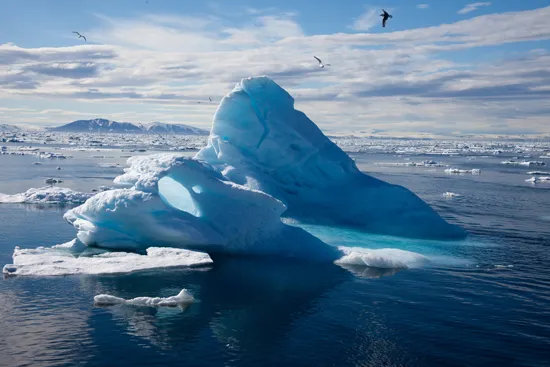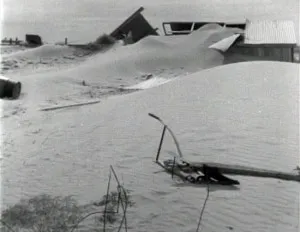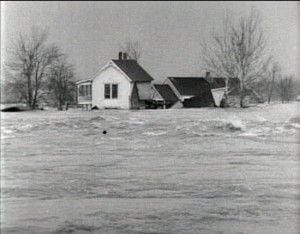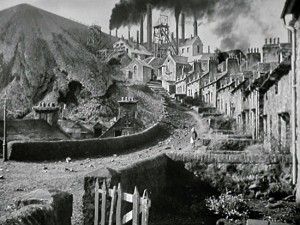Hollywood Takes on the Environment
Even the earliest films had something to say about the state of the planet
/https://tf-cmsv2-smithsonianmag-media.s3.amazonaws.com/filer/20120420020043Arctic-3993-thumb.jpg)
This year’s Earth Day has an ambitious theme: Mobilize the Earth. Two new film releases—Disney’s Chimpanzee and Warner Bros.’s To the Arctic 3D—were timed to take advantage of the publicity surrounding Earth Day, with To the Arctic 3D taking a strong, even pointed, stance on climate change.
The film industry has a long history of movies with environmental messages, although they are usually tied in with other genres. Early Edison films like The Miller’s Daughter (1905) contrasted corrupt urban lifestyles with the more innocent morals of the countryside, something D.W. Griffith would espouse in dozens of bucolic shorts for Biograph. In part filmmakers were catering to their audience, at the time largely lower- and middle-class patrons who were suspicious of the wealthy. Take 1917′s The Public Be Damned, in which farmers are ruined by a “Food Trust,” or The Food Gamblers from that same year, in which food speculators deliberately oppress the poor.
Environmental issues were often folded into social critique films, movies that covered problems between industry and labor, for example. Mining was a favorite topic, and although plots were usually couched in terms of strikes, titles like The Lily of the Valley (1914) and The Blacklist (1916) showed the negative impact the industry had on the landscape.

The environment became a central factor in documentaries like Nanook of the North (1922) and Grass (1925). The former, directed by Robert Flaherty, showed how the Inuit lived in harmony with a harsh Arctic landscape; the latter, directed by Merian C. Cooper and Ernest B. Shoedsack, covered the migration of the Bakhtiari tribe through the grasslands and forbidding mountains of what is now Iraq.
Scenes of the devastation caused by the Dust Bowl filled newsreels in the 1930s, and the subsequent Okie migration inspired novels like John Steinbeck’s The Grapes of Wrath, later filmed by John Ford with Henry Fonda and Jane Darwell as displaced farmers.

The federally funded documentary The Plow That Broke the Plains tried to address the causes of the Dust Bowl. Under the direction of Pare Lorentz, cameramen Ralph Steiner, Paul Strand, and Leo Hurwitz began shooting footage in Montana in September, 1935. Lorentz hired Virgil Thompson to write the score, and worked closely with the composer while editing and writing the narration. Released by the U.S. Resettlement Administration on May 28, 1936, the film played in 3000 commercial theaters before enjoying a long life at Army posts, Sunday schools, and cinema clubs.
Lorentz followed The Plow with The River, an even more ambitious film that started out in 1936 as a survey of the Mississippi River. Heavy flooding in January, 1937, changed the focus of the film, which ended up arguing for approval of Tennessee Valley Authority dam and electrification projects. With another score by Virgil Thompson, The River was funded by the Farm Security Administration and released theatrically by Paramount. It was awarded best documentary at the 1937 International Film Festival at Venice, beating Leni Riefenstahl’s Olympiad.

Many of the filmmakers on the Lorentz titles went on to significant careers in documentaries. Willard Van Dyke worked on The City (1939) and Valley Town (1940), for example, two films that dealt with the environment. Power and the Land (1940, directed by Joris Ivens) continued the arguments set forth in The River. The politically provocative Frontier Films released People of the Cumberland (1937), in which Elia Kazan in his directing debut examined an isolated coal mining community. (Later in his career, Kazan returned to the area to make Wild River, a sort of rebuttal to The River.)
World War II changed the focus of documentaries from cautionary to supportive. Produced by Walt Disney, The Grain That Built a Hemisphere (1943) and Water—Friend or Foe (1944) viewed the environment as something that could be channeled to the war effort. After the war, Disney embarked on a series of True-Life Adventures, nature documentaries like The Living Desert (1953) and The Vanishing Prairie (1954), both Oscar winners. Disney cartoons like Johnny Appleseed (1955) and Paul Bunyan (1958) had implicit environmental messages.
Based on Rachel Carson’s book, The Sea Around Us (1953) won an Oscar for Best Documentary. Carson, whose later book Silent Spring (1962) is credited with bringing the problem of pesticides to the attention of the public, did not like the film and would not permit any of her other works to be filmed. The Silent World (1956), directed by Louis Malle and Jacques Cousteau, also won an Oscar. Cousteau went on to become one of the foremost spokesmen on the aquatic environment and the creative force behind an entire library of oceanographic movies.
But the most significant environmental films of the period were found on television. Stories like 1959′s “The Population Explosion,” 1960′s “Harvest of Shame” and 1968′s “Hunger in America” (all for CBS Reports) addressed environmental issues that were largely ignored in feature films of the time.
It’s not that filmmakers didn’t want to cover the environment. The problem then and now was finding both funding for projects and theater owners who would show the films. Formed in 1969, Appalshop, a nonprofit arts and education center in Whitesburg, Kentucky, addressed these issues by funding and distribution movies, video, books, recordings, and radio shows. Director Mimi Pickering joined Appalshop in 1971, four years before she released The Buffalo Creek Flood: An Act of Man, which documented a dam failure that killed 125, injured 1,100, and destroyed 700 homes. A year later, Barbara Kopple won an Oscar for Harlan County U.S.A.
Apart from the occasional title like the Oscar-winning An Inconvenient Truth (2006), television is still the best bet today for finding environmental films. Feature films, on the other hand, tend to tie environmental themes to larger stories. The China Syndrome (1979) is more a political thriller than an environmental one, although its lessons are chilling. Silent Running (1972) and WALL-E (2008) comment on the environment, but have other stories to tell. The Day After Tomorrow (2004) turns its issues into an adventure tale.

For me one of the most powerful environmental films Hollywood ever released is How Green Was My Valley (1941), the film that famously beat out Citizen Kane for the Best Picture Oscar. Based on an autobiographical novel by Richard Llewellyn, the story ostensibly depicted the decline of the Morgan family, proud coal miners in a small Welsh village. But it is really about the destruction of both a landscape and a way of life for reasons its characters never fully grasp.
There are no answers in How Green Was My Valley. Work is deadly, management and unions corrupt. Religions feud among themselves, authorities are powerless, families fall apart. The downward arc of the film, from its sunny vistas to dank mines, from life to death, is as chilling as any in American film.
/https://tf-cmsv2-smithsonianmag-media.s3.amazonaws.com/accounts/headshot/daniel-eagan-240.jpg)
/https://tf-cmsv2-smithsonianmag-media.s3.amazonaws.com/accounts/headshot/daniel-eagan-240.jpg)